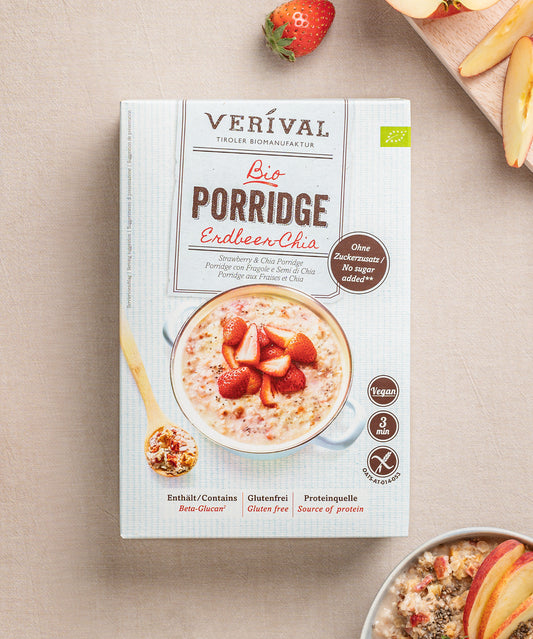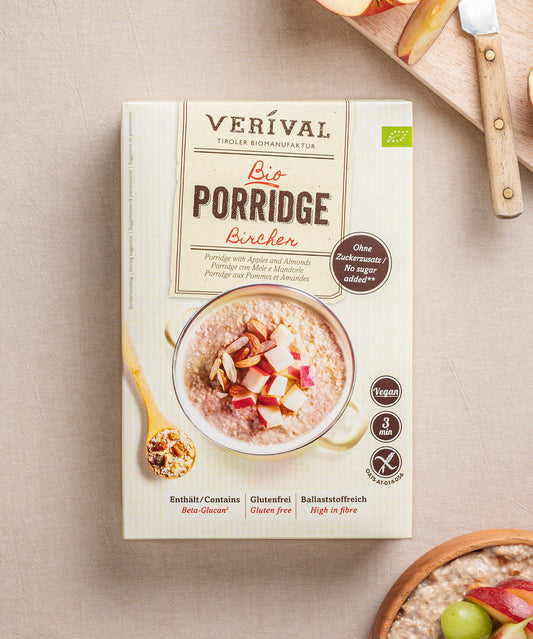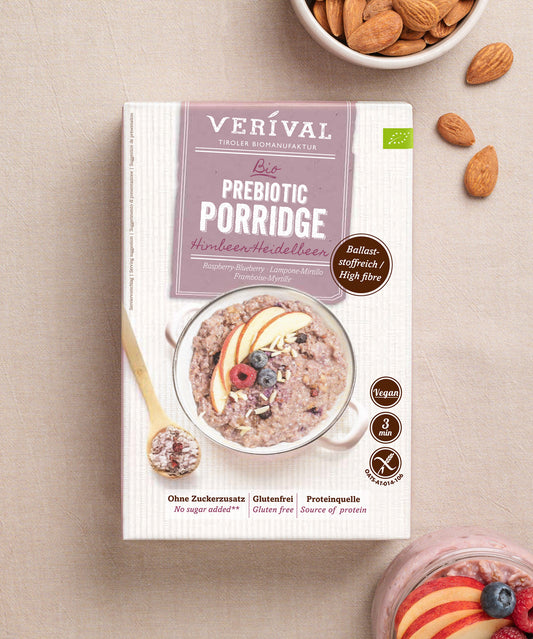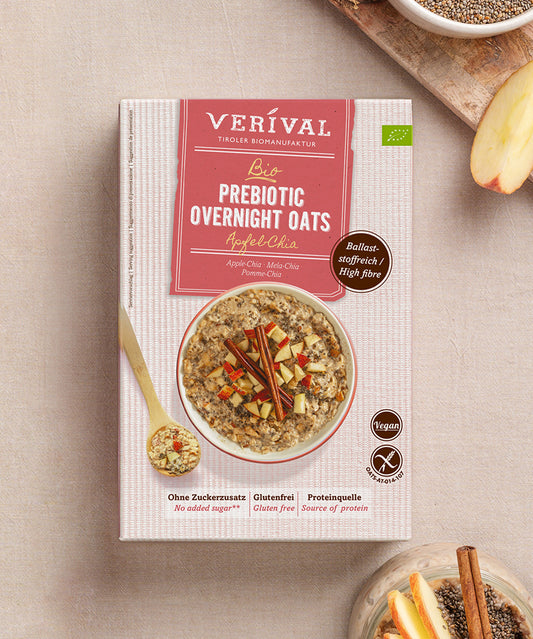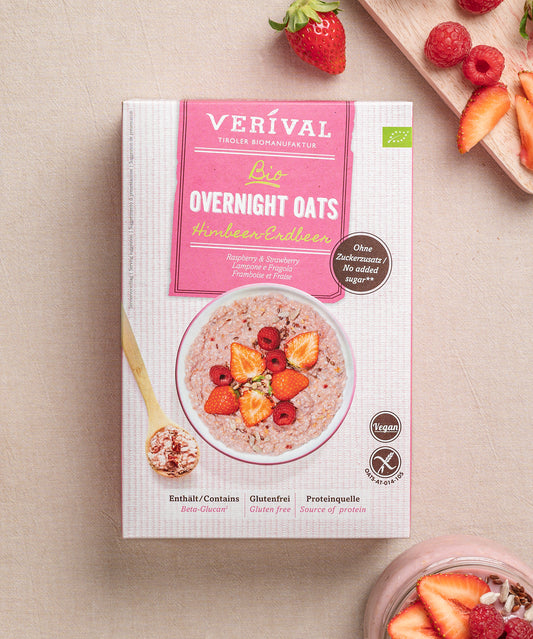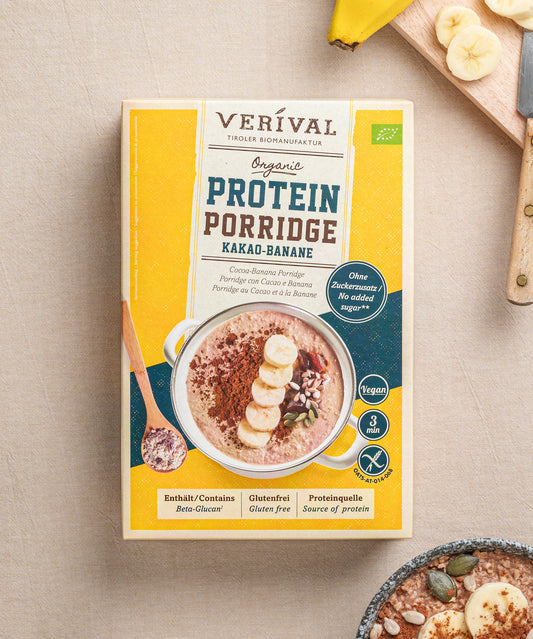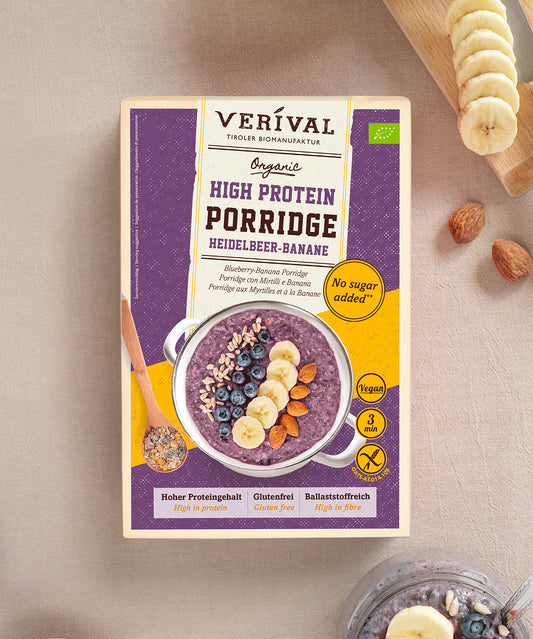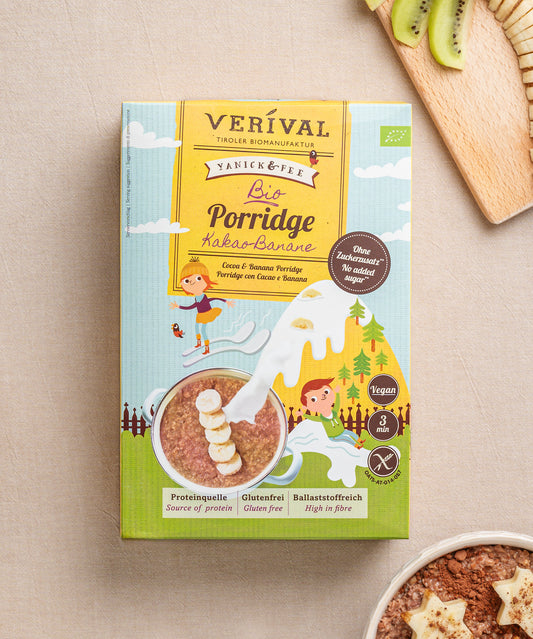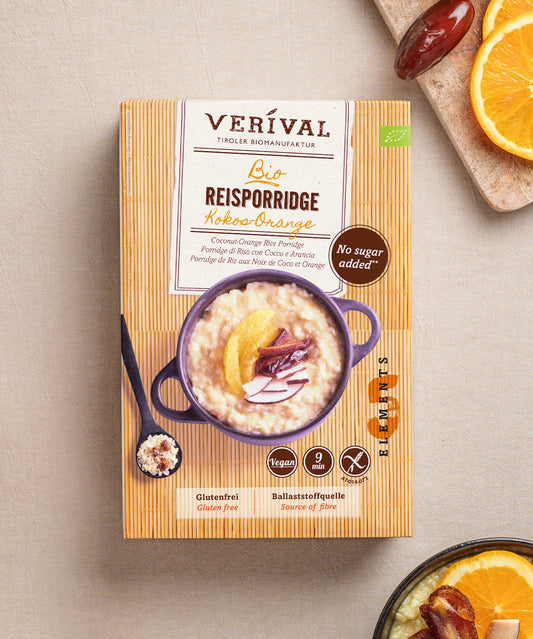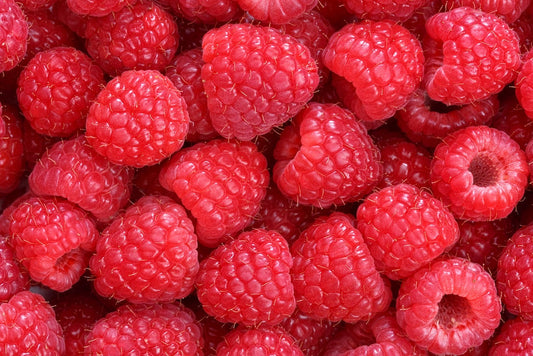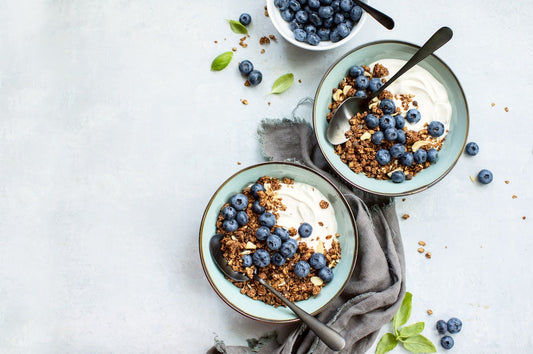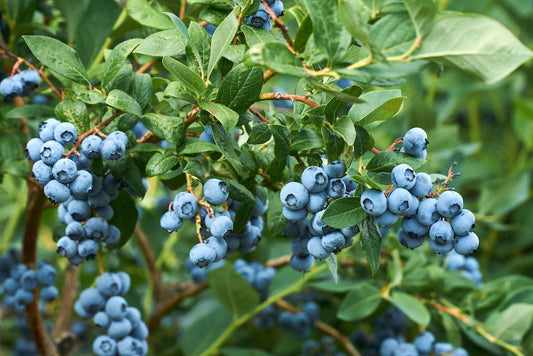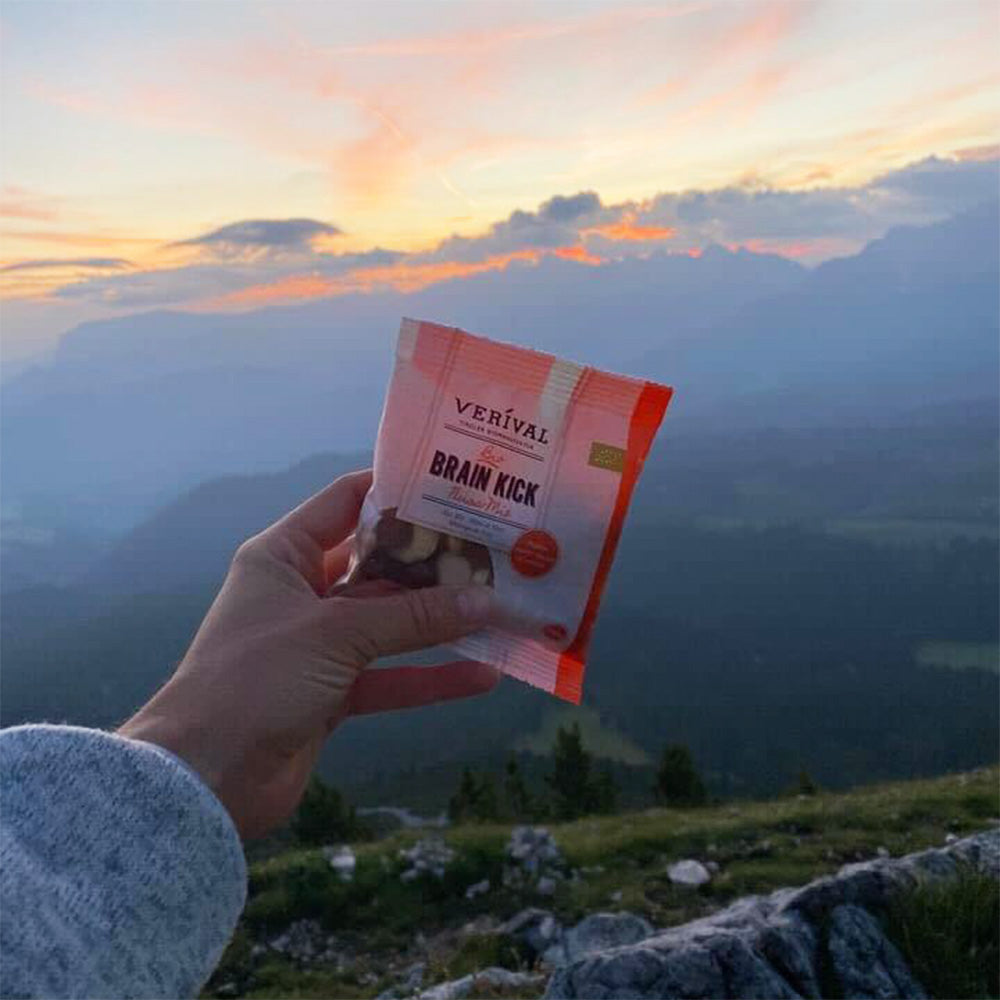Welcome to the fascinating world of pectins – complex carbohydrates of plant origin that are found in fruits. Pectins are complex carbohydrate compounds that can form a gel-like consistency when they come into contact with water.
Pectins are therefore plant-based polysaccharides and belong to the group of hydrocolloids. The pectin molecules are mainly composed of galacturonic acid units and neutral sugars. However, their enormous importance is not limited to the gelling of jams. Today, we will delve deeply into the various aspects of pectin. From its role as a gelling agent in the food industry to its positive effects on our digestion.
Pectin is a natural substance found in the cell walls of many higher terrestrial plants. In plants, pectin has a stabilizing and water-regulating function. Fruits with a high pectin content include apples, pears, quinces, apricots, currants, gooseberries and the peel of citrus fruits.
Pectin is approved in the EU as a food additive under the number E 440 without maximum quantity restriction for food in general.
Discover the versatile world of verival breakfast
Pectins – a plant-based gelling agent
Pectin is not just an ordinary thickening agent – it is a true all-rounder. As a natural polysaccharide, it enables the formation of gel in many foods, from jams to baked goods. Pectin opens up new horizons, especially for those who prefer a vegan lifestyle.
It serves as a fully-fledged plant-based alternative to animal-based gelatine, enabling the production of delicious desserts and cakes. This plant-based gelling agent not only adds texture, but also a healthy dose of versatility in the kitchen and in the food industry.
Pectins in the food industry
In the food industry, pectin plays a central role as a versatile player. Its ability to bind liquids and create a gel-like consistency makes it a sought-after gelling agent. But its function is not limited to this. Pectin also serves as a stabilizer that improves the texture and shelf life of food. These properties make it an essential ingredient in a wide range of products, from fruit gels to yoghurts.
The use of pectin in the food industry not only enables the creation of products with a pleasant consistency, but also the development of innovative recipes. The fact that pectin is a plant-based resource that avoids animal ingredients is an advantage. This highlights the importance of pectin as a key component in food production, ensuring not only gelling and thickening but also stability.
Vegan alternative to animal gelatin
For people who choose to follow a vegan lifestyle, pectin opens the door to a new world of culinary possibilities. Instead of using animal-based gelatin, you can rely on this plant-based gelling agent. This also allows you to incorporate your moral concerns about meat consumption.
Pectin has established itself as a compelling vegan alternative to animal gelatin. While animal gelatin is derived from collagen, a protein of animal origin, pectin is based on natural plant sources. This characteristic makes it not only attractive for vegans, but also for those who want to eat more consciously.
Using pectin as a vegan gelling solution is not only the ethical choice, but also allows you to create delicious desserts, cakes, fruit preserves, fruit fillings and jellies without compromising on texture and quality. Pectin is proof that you don't have to compromise on morals or taste.
Uses of pectin in food: a wide range of applications in the kitchen
Pectin is a true all-rounder in the kitchen, especially when it comes to making fruit preparations (such as jams, preserves or jellies) but also dairy products. Its ability to bind liquids and create a gel-like structure gives these delicacies the desired consistency.
In jams and preserves, pectin is an invisible helper that ensures that fruit and sugar blend into a perfect texture. When making jellies, it is the pectin that gives them their special bite and characteristic gelling ability.
The combination of pectin with preserving sugar, which already contains acid and pectin, is particularly popular for making jams and jellies. This mixture guarantees a reliable gelling result and a simpler approach.
Pectin also proves its worth in the bakery and in the production of confectionery, where it gives structure to doughs and ensures a pleasant consistency. The wide range of applications for pectin makes it an indispensable ingredient in your kitchen.
Pectin in jams, preserves and jellies
The use of pectin in jams, preserves and jellies is the key to the perfect consistency. Pectin, a natural gelling agent, combines fruit juices with sugar to form a smooth mass that melts deliciously on your breakfast rolls.
Combining pectin with preserving sugar, which already contains pectin and acid, makes the process much easier. The preserving sugar ensures reliable gelling and makes it possible to shorten the preparation time.
In jellies, pectin gives them their characteristic bounce and ensures that the jelly pieces retain their shape. The versatility of pectin makes it possible to combine different fruits and create a wide range of flavors.
Although pectin works in the background, it is an indispensable ingredient that significantly influences the enjoyment of jams, preserves and jellies. It is the magic behind the texture that makes these treats so irresistible.
Pectins in baked goods and confectionery
Pectin is not only used in fruit creations – it also shows its versatility in the bakery and in the production of confectionery. In baked goods, it gives doughs structure and ensures a pleasant consistency, while in confectionery, it ensures smoothness. From crispy biscuits to delicate cakes – pectin is an invisible partner that ensures unmistakable enjoyment.
Fancy some porridge? Discover our Verival Porridge here
Pectin as fiber – useful information for healthy intestinal flora
Pectin is more than just a gelling agent – it is also a valuable dietary fiber. Once it reaches our digestive system, it swells and increases the volume of the stool. This supports intestinal health, promotes regular digestion and has a prebiotic effect on the intestinal flora. By nourishing the good intestinal bacteria, pectin helps to maintain a balanced intestinal flora, which is crucial for our health.
Pectins for digestion – The role of fiber
Pectin is not only a delight for the palate, but also for our digestion. As a soluble fiber, it absorbs water and swells in the intestines. This increases the stool volume and promotes smooth digestion. By regulating intestinal motility, it counteracts constipation and helps to form softer stools.
This effect supports healthy digestion and contributes to our general well-being. Pectin is therefore not only a culinary player, but also a valuable ally for our digestion.
Pectin for intestinal health and intestinal flora
The importance of pectin goes beyond texture – it plays an essential role in our intestinal health and intestinal flora. The short-chain fatty acids lower the pH value in the intestine and thus support the reproduction of physiological intestinal flora. As a prebiotic fiber, pectin serves as food for our good intestinal bacteria. These bacteria are crucial for a balanced intestinal flora, which in turn strengthens our immune system and prevents inflammation.
Pectin promotes the growth of these beneficial bacteria and helps to build a healthy and diverse intestinal flora. In this way, it not only supports our digestion, but also our overall well-being from the inside out.
Pectins – A detailed analysis
A closer look at pectin reveals its complexity. Often extracted from apple pomace, it is a valuable polysaccharide. Its pectin content can vary depending on the source, but this does not affect its many applications. Pectin is not only valued in the kitchen, but is also used as a natural additive in food.
Here, its ability to enhance flavor and texture is matched by its safety for food manufacturers. Pectin is an example of how careful analysis and processing of natural resources can lead to valuable solutions for our diets.
Pectin composition and extraction
The extraction of pectin from apple pomace and other sources is a fascinating process. Pectin is abundant in apple pomace, the residue left after juice production. Extraction is done by boiling and filtering, with further purification of the pectin obtained.
Chemically speaking, pectin consists of branched polysaccharide chains that contain acidic components. This composition gives pectin its unique properties as a gelling agent and stabilizer in food. A sustainable source for versatile applications in the food industry and in our kitchen. And that is also becoming increasingly difficult to take into account – which is precisely why we are big fans of pectin. You should become one too!
Apples as a source of pectins
Pectins as an additive in food
Pectin has a place not only in nature, but also as an additive in food. Labeled with an E-number, it is recognized as a safe component of many products. The pectin content can vary depending on the application, but its contribution to texture and shelf life is constant.
This use of pectin illustrates its versatile nature – from the jam on the breakfast table to the stabilization of yoghurts and desserts. This makes pectin not only a natural ingredient, but also a reliable option for modern food production.
Different types of pectin and their applications
The world of pectins is diverse and includes different types with specific properties. Amidated pectin, agar-agar and apple pectin are just a few examples. Amidated pectin is particularly heat-resistant and is suitable for baked goods, while agar-agar is extracted from algae and is a vegan gelling agent in desserts. Apple pectin, extracted from apple pomace, is an all-rounder for jams and jellies. Each type of pectin helps to enrich the world of culinary creations and offers individual solutions for a wide range of applications. A distinction is also made between low-ester and high-ester pectins and pectic acids.
Different types of pectin and their specific applications
The variety of pectin types ranges from amidated pectin to agar-agar and apple pectin. Amidated pectin shows its strengths in baked goods because it withstands heat and improves texture. Agar-agar, derived from algae, is ideal for making desserts and jellies and is a popular vegan option.
And apple pectin, extracted from apple pomace, is the centerpiece of jams and preserves. These targeted applications illustrate the remarkable versatility of pectin types and their tailored roles in various culinary creations.
Breakfast for a healthy weight? This way!
Conclusion
Pectins are much more than just gelling agents. From the kitchen to the food industry, they have established themselves as indispensable components. Their role as a vegan alternative, source of fiber and supporter of intestinal health is remarkable. Pectins not only provide excellent consistency and structure, but also promote a balanced diet.
The different types of pectin open up a diverse range of applications, from desserts to baked goods. Overall, pectins show that they can enrich not only the palate but also health. Therefore, don't go without them and incorporate them into your diet!
Oatmeal Breakfast Hearts with Blueberry-Apple Crunchy
Make your loved ones happy with this healthy and delicious homemade breakfast heart made from rolled oats.
Preparation time: 20 min.
Cook time: 20 min.
Total time: 40 min.
Serves: 4
Ingredients
For the dough
- 100 g rolled oats
- 200 ml almond milk or another plant-based milk
- 1/2 tsp vanilla powder optional
- 1/2 tsp cinnamon
- 2 tbsp agave syrup
- 1/2 ripe banana
- 1 pinch of salt
For the filling
- 200 g yoghurt
For the topping
- approx. 1 handful of Verival Blueberry-Apple Crunchy
Preparation
- Preheat the oven to 200°C (convection).
- For the dough, mix the oats with the almond milk, cinnamon, vanilla, salt and agave syrup.
- Peel the banana, mash it with a fork and fold it into the oat mixture.
- Let the mixture soak for a few minutes. If it is too runny, add a little more oatmeal. If it is too firm, add a little more milk.
- Line a baking tray with baking paper and spread the mixture into a heart shape. It's even easier with a heart-shaped mold.
- Bake for about 20 minutes, let it cool slightly and remove from the mold.
- Spread the yoghurt over the oat heart and sprinkle with blueberry-apple Crunchy.
Frequently asked questions
What is pectin?
Pectin is a natural substance found in the cell walls of plants, especially in fruits. It is a polysaccharide and forms a gel-like structure with water, which is why it is used as a gelling agent in foods such as jams. Besides its texturizing role, pectin also aids digestion and intestinal health as a dietary fiber and supports the development of healthy intestinal flora.
Why is pectin used as a gelling agent in food?
Pectin is used as a gelling agent in food because it forms a gel-like structure in water, creating the desired consistency and texture in products such as jams and jellies.
Is pectin vegan?
Yes, pectin is vegan. It is derived from plant sources, specifically fruits and vegetables. Unlike animal gelling agents like gelatin, which is derived from animal collagens, pectin is a purely plant-based option. As such, it is a popular choice for people who prefer a vegan or vegetarian diet and want to avoid animal products.
In which foods is pectin used?
Pectin is used in jams, preserves, jellies, baked goods, confectionery, yoghurts and more to improve texture and increase shelf life. Its versatile application ranges from sweet to savory.
Why is pectin a valuable dietary fiber?
Pectin is valuable as a dietary fiber because it binds water in the intestines, increases stool volume, regulates digestion, supports intestinal flora and contributes to intestinal health.
How is pectin obtained?
Pectin is obtained from plant sources such as apple pomace by boiling, filtering and drying. It is separated from other fruit components and used in various foods.
Are there different types of pectin?
Yes, there are different types of pectin, such as amidated pectin, agar-agar and apple pectin, each of which has specific properties and applications in food production.
What are high methylester pectins?
Pectins are classified, among other things, according to their average degree of esterification. A distinction is made between low-ester and high-ester pectins, as well as pectic acids. So-called high-ester pectin gels particularly quickly in cold water, acidic environments and when sugar is present.


